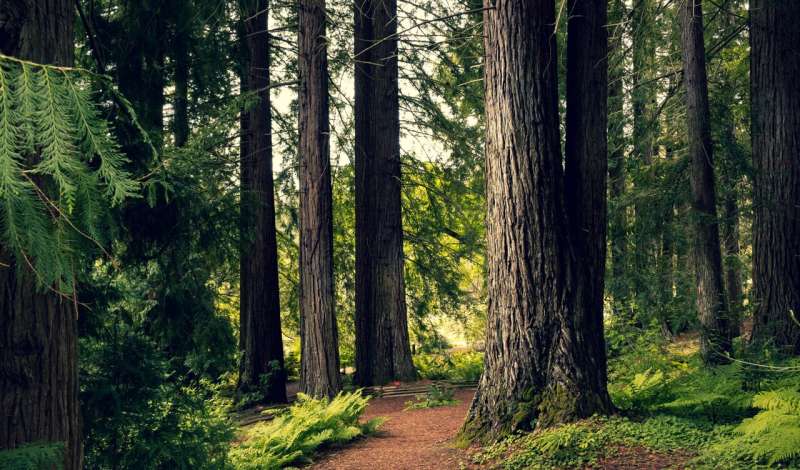This article has been reviewed according to Science X's editorial process and policies. Editors have highlighted the following attributes while ensuring the content's credibility:
fact-checked
reputable news agency
proofread
Some plants are more flammable than others. How gardeners can reduce the risks

The deadly wildfires in Hawaii this month were fueled in part by plants, in particular invasive grasses that have taken over land once occupied by sugar and pineapple plantations.
Some plants are more flammable than others, says Michele Steinberg, wildfire division director at the National Fire Protection Association. But "there is no such thing as a fireproof plant," she says—all plants can ignite under the right conditions.
Those conditions include improper pruning, insufficient watering, and poor sanitation practices that allow dry, dead plant parts to remain on the soil surface in high-risk areas.
If you live in a fire-risk zone (or an area where climate change is increasing the fire risk) and are selecting plants for your garden, knowing which ones offer some fire resistance and which are more flammable will serve you well.
Quicker to catch fire
Plants that contain aromatic oils, resins, waxes or gummy sap are among the quickest to ignite, even if they've been well-watered and cared for. Those include acacia, bamboo, eucalyptus, Japanese honeysuckle, rosemary, Scotch broom and gas plant, which gets its name from the flammable vapor its flowers and leaves exude.
Trees with peeling, papery bark, like river birch, are generally more flammable than those without. And fine-needled evergreen shrubs and trees, like cedar, cypress, fir, juniper, pine and spruce, contain volatile saps and resins. Their dropped needles, left to dry on the ground—or the roof—further increase the fire risk. Redwoods, a notable exception, are considered fire-resistant due to the tannic acid in their bark.
Many grasses, such as the buffel, molasses and guinea types that fueled the Hawaii fires—as well as fountain and feather grasses—are considered highly flammable. Their ignitability increases when they are left to stand dry over winter or during periods of drought; excessive dry heat evaporates moisture from the soil and from them and many other kinds of plants, essentially turning them into kindling.
Native vs. non-native
As a group, " native plants aren't necessarily less flammable" than introduced species, Steinberg said.
But nonnative, invasive plants often pose higher fire risks because they spread readily, typically are left undisturbed by wildlife, outcompete native vegetation, and often tolerate heat, drought and heavy rains well. They can quickly cover fields, acres and even miles of land, where a spark, such as from lightning, can set them ablaze.
For the best fire resistance, select deciduous trees, like ash, crabapple, dogwood, locust, maple and oak, over fine-needled evergreens. Succulents with water-filled leaves, like ice plants and sedums, are slow burners, as are some groundcovers, like ajuga and creeping phlox.
What to look for in plants
The Washington State University Extension Service has published valuable guidelines identifying these general plant characteristics as fire-resistant:
- High moisture content in leaves (these ignite and burn more slowly).
- Little or no seasonal accumulation of dead vegetation.
- Open branching habits (they provide less fuel for fires).
- Fewer total branches and leaves (again, less fuel for fires).
- Slow-growing, so less pruning is required (to keep open structure as noted above).
- Non-resinous material on the plant (i.e., stems, leaves, or needles that are not resinous, oily or waxy).
© 2023 The Associated Press. All rights reserved. This material may not be published, broadcast, rewritten or redistributed without permission.





















